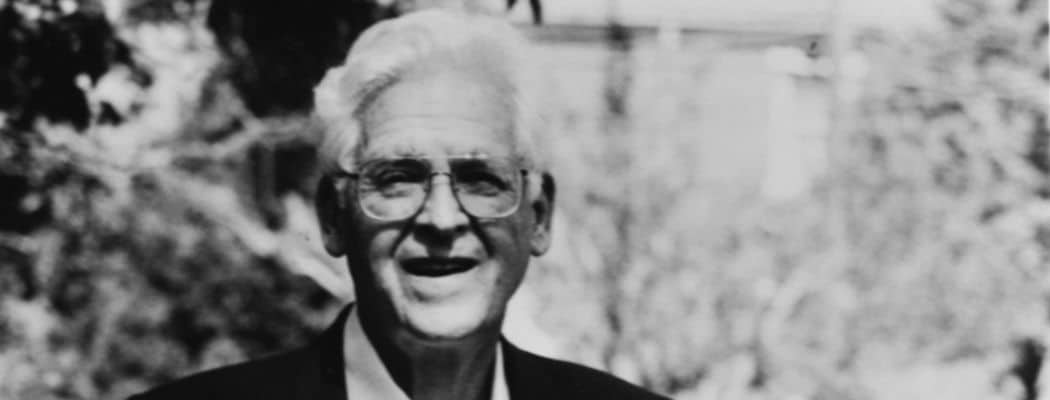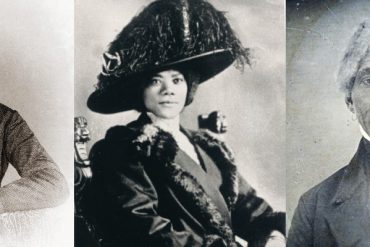Meet the man who made Nantucket what it is today.
He was driven by both passion and profits. He was met with both praise and ire. He was arguably the most important Nantucket resident in the last fifty years, maybe even the last century, and yet the majority of the people who come to the island today have absolutely no idea who Walter Beinecke was.
 Walter “Bud” Beinecke, Jr. stepped foot on Nantucket for the very first time nearly a hundred years ago. The circumstances of his arrival weren’t exactly pleasant. He had been living in muggy New York City and was afflicted with a painful ear infection at a time when there were no antibiotics to provide him relief. His family’s doctor suggested that some fresh air might make all the difference, so the Beineckes borrowed a friend’s cottage in ‘Sconset. So began a lifelong love affair with Nantucket that would change the island forever.
Walter “Bud” Beinecke, Jr. stepped foot on Nantucket for the very first time nearly a hundred years ago. The circumstances of his arrival weren’t exactly pleasant. He had been living in muggy New York City and was afflicted with a painful ear infection at a time when there were no antibiotics to provide him relief. His family’s doctor suggested that some fresh air might make all the difference, so the Beineckes borrowed a friend’s cottage in ‘Sconset. So began a lifelong love affair with Nantucket that would change the island forever.
Not much of a beachgoer, Beinecke enjoyed walking around downtown, admiring the vestiges of Nantucket’s bygone era when there were more millionaires on Orange Street than Wall Street. Beinecke himself was a millionaire, the heir to the S&H Green Stamp fortune that his father and uncles took control over in the early 1920s. “Although known as a rich young kid, he never acted the part, and was always very generous,” wrote Barbara Bennett, a childhood friend who later became his personal assistant.
Despite his pedigree, Beinecke grew up to be a self-motivated entrepreneur, not only working for his family business, but also sailing as a Merchant Marine, running a ranch in Florida, and starting a bank services company among other businesses. But of all his ventures, it was Beinecke’s development of Nantucket that landed him in the pages of Time and Life, earned him lunch with President Lyndon Johnson and made him a household name on the island — for better and for worse.
Strolling the streets of downtown Nantucket today, one can easily be seduced into thinking that this is how it’s always looked, an island pristinely preserved in time. But that’s not the case. After the collapse of the whaling industry, Nantucket spiraled into a depression. The docks were splintered and many stores were shuttered, so the Gray Lady chased tourism as its new white whale.
 Fearing that Nantucket would lose its charm to the onslaught of penny-pinching day-trippers, Beinecke took it upon himself to shape the island toward becoming a world-class resort destination that would attract wealthy visitors. As he famously said in Time magazine in July 1968, “Instead of selling six postcards and two hot dogs, you have to sell a hotel room and a couple of sports coats.”
Fearing that Nantucket would lose its charm to the onslaught of penny-pinching day-trippers, Beinecke took it upon himself to shape the island toward becoming a world-class resort destination that would attract wealthy visitors. As he famously said in Time magazine in July 1968, “Instead of selling six postcards and two hot dogs, you have to sell a hotel room and a couple of sports coats.”
Beinecke had real estate development in his blood. His grandfather was a German immigrant who landed in New York City at the age of nineteen in 1865. In fifteen short years, Bernhard Beinecke went from driving a meat wagon to becoming one of the most powerful names in the meat packing industry. Eventually, he owned the largest stockyard in New York City. While shipping his meats to the city’s many hotels, Bernhard Beinecke spotted another opportunity. Much like his grandson would do on Nantucket decades later, Bernhard began buying up hotels, turning them into iconic landmarks that came to define the cityscape. The Park Plaza, once described as the “most elegant hotel in America,” became the crown jewel of his empire. By the time Walter Beniecke, Jr. stepped foot on Nantucket in 1923, his family’s impact on New York City could be seen from the Hudson River to Park Avenue.
Unlike his grandfather’s approach, preservation became Beinecke’s opening gambit on Nantucket. He and his father founded the Nantucket Historical Trust, a nonprofit dedicated to preserving the historical integrity of the island’s architecture. After purchasing an 1832 mansion at 72 Main Street, Beinecke’s Historical Trust went on to acquire and preserve such architectural landmarks as the Jared Coffin House, The White Elephant, Zero Main Street and what is today the Nantucket Boat Basin. He restored historic homes, landmarks and churches, many in dramatic fashion. When the Congregational church needed a new steeple, Beinecke had a replica built off-island and helicoptered over — all on his own dime. His efforts did not go unnoticed. Capping a slew of accolades, Ronald Reagan awarded him the President’s Historic Preservation Award.
“The Nantucket we see today is largely the vision of Walter Beinecke, Jr.,” says Michael May, the executive director of the Nantucket Preservation Foundation. “He was one of the first businessmen in the country to understand that historic preservation was an asset to a community that if embraced would strengthen the local economy.”
 Hand-in-hand with his preservation efforts was Beinecke’s vision of turning Nantucket into an enclave for the wealthy, rather than a cheap retreat for day-trippers. To execute this vision, he bought up 80 percent of the commercial space in town and squeezed out mom-and-pop shops by jacking up rents and replacing them with quaint storefronts. He rebuilt the docks to be more appealing to yachters and pressured ferries to raise their rates while also decreasing their passengers. By July of 1968, Beinecke controlled two of the three gas stations, five inns, the majority of downtown stores and a sprawling landmass that he put into conservation. Nantucket quickly became more expensive and more exclusive.
Hand-in-hand with his preservation efforts was Beinecke’s vision of turning Nantucket into an enclave for the wealthy, rather than a cheap retreat for day-trippers. To execute this vision, he bought up 80 percent of the commercial space in town and squeezed out mom-and-pop shops by jacking up rents and replacing them with quaint storefronts. He rebuilt the docks to be more appealing to yachters and pressured ferries to raise their rates while also decreasing their passengers. By July of 1968, Beinecke controlled two of the three gas stations, five inns, the majority of downtown stores and a sprawling landmass that he put into conservation. Nantucket quickly became more expensive and more exclusive.
Not surprisingly, Beinecke earned himself detractors. Many native Nantucketers argued that his growing monopoly over island real estate was pricing them out of town and shuttering locally owned shops that couldn’t afford to pay his exorbitant rents. In the summer of 1967, some locals took to wearing buttons that read “NO MAN IS AN ISLAND” and “BAN THE B.” Beinecke himself admitted that tensions around his endeavors ran high: “I have wondered what would have happened to me or Nantucket… if I had a full-time career here. I would have driven everybody in town crazy if I had been able to last it out myself.” Still others argued that even if Beinecke was making the cost of living more expensive, he was preventing the island from falling to the fates of other garish tourist traps like Coney Island.
In 1987, Beinecke sold off his Nantucket properties to the First Winthrop Corporation for $55 million. He passed away seventeen years later. Today one might wonder what he would make of the island if he were still alive. “I don’t think he would be happy,” says one of Beinecke’s daughters, Barbara Spitler. “He would have a fit with the scale of the houses and the things that are being built. They really don’t fit with the island.” Of course, the irony is that this growth is an extension of the wealth Beinecke was trying to attract from the beginning. To this Spitler explains that her father would take issue with what brings many people to Nantucket today. “They come here because it’s the ‘it’ place to be,” she says. “They don’t know the history and why things are the way they are.” Indeed, history was paramount to Beinecke. While he might be remembered as a developer, he was a preservationist at the core.
 Interestingly enough, despite the massive impact he had on the island, you’d be hard pressed to find any sign remaining of Beinecke. There are no statues or monuments. The heir to a stamp fortune has no conspicuous stamp of his own here. But if you walk the docks or stroll around downtown, make no mistake, Walter Beinecke’s legacy can be found firmly below your feet.
Interestingly enough, despite the massive impact he had on the island, you’d be hard pressed to find any sign remaining of Beinecke. There are no statues or monuments. The heir to a stamp fortune has no conspicuous stamp of his own here. But if you walk the docks or stroll around downtown, make no mistake, Walter Beinecke’s legacy can be found firmly below your feet.
Special thanks to the Nantucket Historical Association, specifically for the use of its Spring 2010 issue of “Historic Nantucket,” which served as an invaluable resource for writing this article about Walter Beinecke, Jr.






